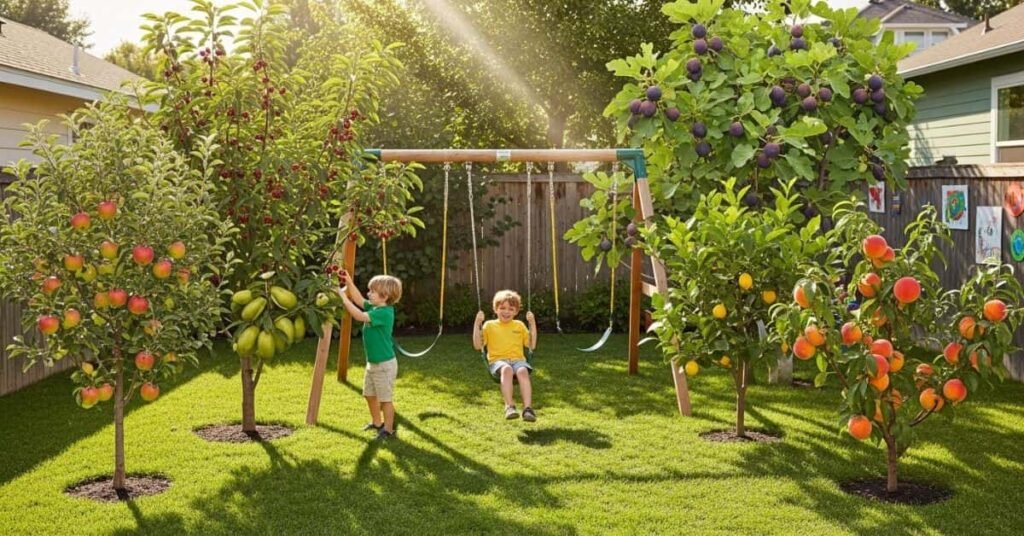Creating a family-friendly backyard isn’t just about swings and slides — it’s also about bringing nature closer to your kids. One of the best ways to do this is by planting safe fruit trees near children’s play areas. These trees don’t just offer shade; they provide fresh, delicious fruits your kids will love to pick and eat straight from the branches.
But here’s the key — not every fruit tree is ideal for a child’s play zone. Some have thorns, toxic leaves, or drop heavy fruits that could cause injuries. That’s why choosing kid-safe and low-maintenance fruit trees is essential for every family garden.
In this guide, we’ll explore seven sweet and safe fruit trees that thrive beautifully in home gardens while keeping your little ones protected. We’ll also share planting tips, care advice, and answers to common questions parents often ask about growing fruit trees near play areas.
1. Apple Trees — The Classic Family Favorite
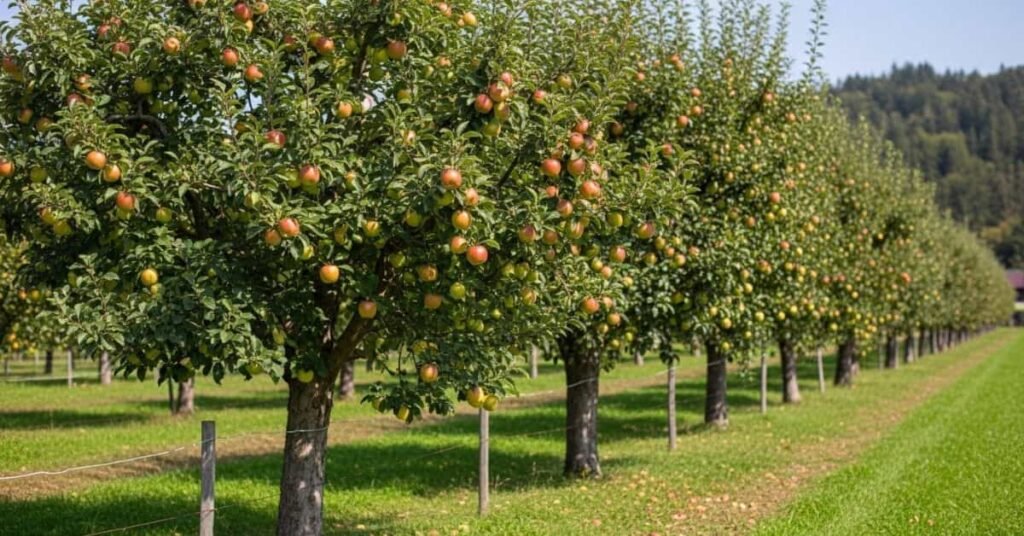
There’s a reason apple trees are found in so many backyards. They’re easy to grow, look beautiful all year round, and produce sweet, crisp fruits that children adore. Apples are rich in fiber and vitamins, making them a healthy snack option for growing kids.
When choosing an apple tree for your play area, go for dwarf or semi-dwarf varieties. These grow smaller, making fruit-picking easy and safe. Popular kid-friendly options include ‘Honeycrisp,’ ‘Fuji,’ and ‘Gala.’
Apple trees thrive in full sunlight and well-drained soil. They require moderate watering, especially during the first few years. Regular pruning helps maintain shape and prevents branches from growing too close to where kids play. Plus, apple trees are a wonderful way to teach children about pollination and the seasons of growth.
The best part? Watching your kids run around under the shade of an apple tree while enjoying a fruit they picked themselves is an unforgettable moment every parent treasures.
2. Pear Trees — Sweet, Soft, and Perfect for Little Hands
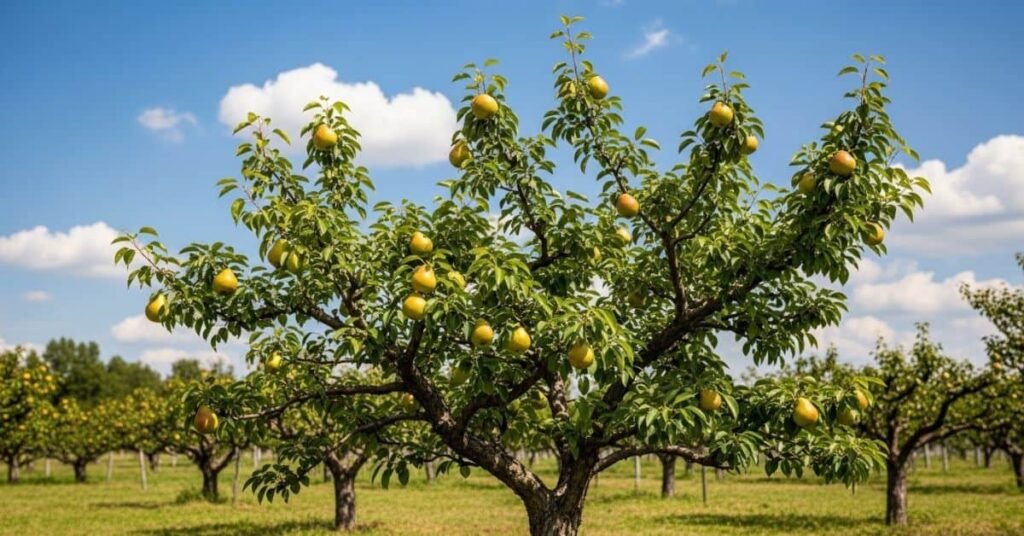
Pear trees are another delightful choice for child-friendly gardens. Their fruits are soft, juicy, and easy for small children to bite into. The texture is less crunchy than apples, making pears great for toddlers too.
‘Bartlett’ and ‘Anjou’ pears are among the most popular home-growing varieties. Like apples, pears love full sunlight and slightly acidic soil. The trees bloom with beautiful white flowers in spring, creating a charming and peaceful play atmosphere.
Pears are relatively low-maintenance. Once established, they only need occasional pruning and seasonal feeding. They don’t drop heavy fruits all at once, which keeps the ground safe for running kids.
Parents also love that pear trees attract beneficial pollinators like bees, promoting biodiversity in the garden. And since pears can be eaten fresh, baked, or juiced, kids can enjoy them in various healthy snacks.
3. Cherry Trees — Bursts of Color and Flavor

Few things delight children like picking bright red cherries straight from a branch. Cherry trees bring color, sweetness, and excitement to any backyard. Their small, bite-sized fruits are perfect for kids, and their lovely blossoms make springtime magical.
When choosing cherry trees for play areas, opt for sweet cherry varieties like ‘Bing’ or ‘Stella.’ Sour cherries are better for baking and not as enjoyable raw for young children.
Cherries need full sunlight and moderate watering. The trees usually grow compact, especially dwarf types, which are perfect for smaller gardens. However, you should ensure the ground under the tree remains clean since fallen fruits can attract insects if left unattended.
Beyond their beauty and flavor, cherry trees create a sensory learning experience for children — from smelling the blossoms to tasting the fruits. They’re a beautiful way to blend play, nature, and nutrition into one joyful space.
4. Fig Trees — Soft, Sweet, and Surprisingly Easy to Grow
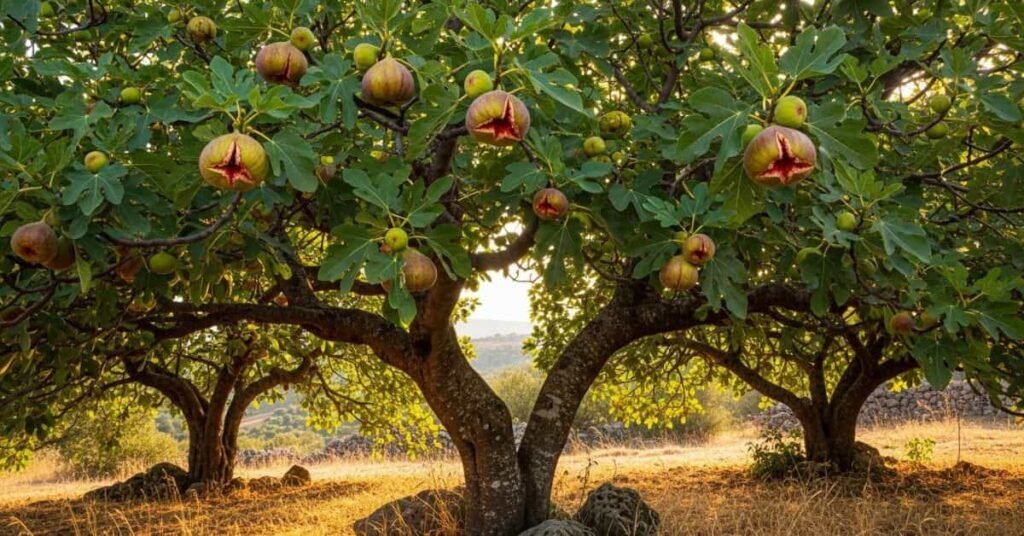
If you’re looking for something a little different, fig trees are an underrated gem for family backyards. Their fruits are naturally sweet, soft, and nutritious — filled with calcium, fiber, and antioxidants.
Figs are also low-allergen fruits, making them a safer option for sensitive children. They thrive in warm climates and prefer well-drained soil with full sun exposure. The ‘Celeste’ and ‘Brown Turkey’ varieties are especially popular among homeowners because of their delicious flavor and manageable size.
Fig trees grow quickly and can handle light pruning, which keeps them tidy and suitable for play areas. They’re also excellent for container gardening if you want to keep them near patios or outdoor playsets.
Another reason parents love fig trees is their minimal mess. Unlike heavier fruits, figs don’t cause damage when they fall. This makes them both safe and easy to maintain. Watching your kids enjoy fresh figs straight from the branch is a sweet reward for your gardening effort.
5. Peach Trees — Juicy Treats for Warm Summers

Peach trees bring a tropical touch to your yard while providing juicy, vitamin-rich snacks your children will love. Their fruits are soft, sweet, and full of flavor — perfect for summertime.
For family-friendly gardens, choose dwarf peach varieties like ‘Bonanza’ or ‘Pix Zee.’ These trees grow around 4–6 feet tall, making fruit picking safe and fun for children.
Peaches need full sun and slightly sandy soil. They bloom with stunning pink flowers in spring, adding color and charm to your play area. Regular pruning after harvest helps keep the tree compact and healthy.
One of the biggest advantages of peach trees is their fast growth — they often bear fruit within two years. This makes them an excellent choice for parents who want quick results and delicious rewards.
Imagine your kids running through the yard with juice-stained smiles, enjoying the fruits of your garden’s labor — that’s what peach trees are all about.
6. Mulberry Trees — The Fun, Shade-Loving Snack Tree
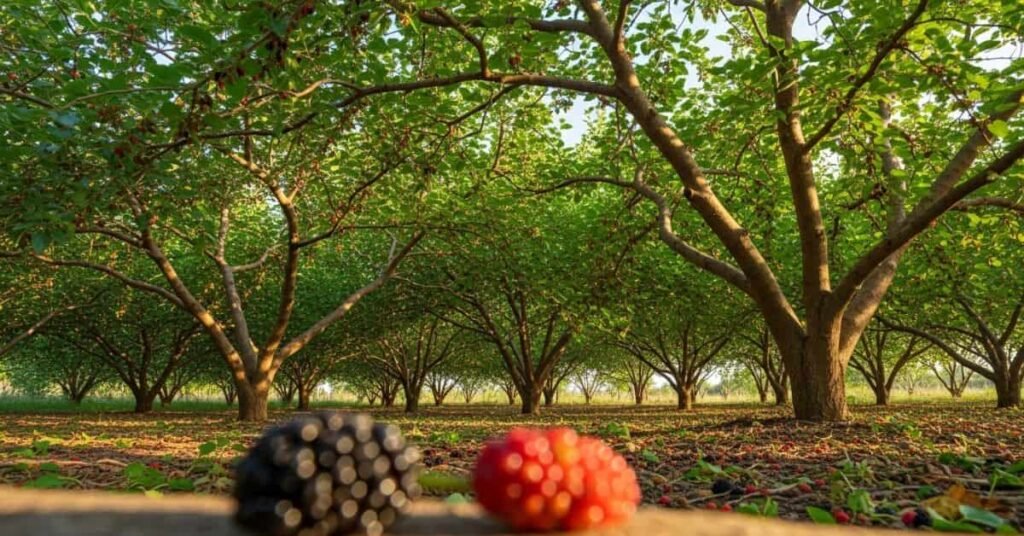
Mulberries are among the most underrated family trees out there. Their fruits are sweet, juicy, and packed with antioxidants. Kids love the idea of picking tiny berries and popping them into their mouths.
Mulberry trees grow quickly, providing excellent shade for play areas. The dwarf varieties are best for backyards — they’re easier to manage and produce plenty of fruit without becoming too large.
The ‘Morus nigra’ (Black Mulberry) is a favorite for its flavor, while the white mulberry tends to be less messy. These trees thrive in full sunlight and tolerate a range of soil types. They’re also drought-resistant, making them ideal for busy families who don’t have time for constant watering.
A bonus? Mulberries attract butterflies and birds, turning your garden into a little wildlife paradise. Just make sure to plant them a few feet away from paved play areas, as ripe berries can stain if stepped on.
7. Plum Trees — Sweet, Colorful, and Low-Maintenance

Plum trees combine beauty, flavor, and safety — everything a family-friendly fruit tree should have. Their round, soft fruits are perfect for small hands, and their slightly tangy sweetness makes them a favorite among kids.
The ‘Santa Rosa’ and ‘Methley’ varieties are excellent choices for home gardens. They thrive in full sunlight and adapt well to various soil conditions. Plums don’t require a lot of maintenance, which makes them ideal for busy parents.
Plum trees also produce lovely spring blossoms that attract bees and butterflies. Their moderate size provides partial shade without overshadowing the rest of the play area.
With proper pruning, plums stay neat and manageable. Just ensure ripe fruits are harvested regularly to avoid attracting pests. For families who want a mix of beauty, flavor, and simplicity, plum trees are an outstanding choice.
Tips for Planting Fruit Trees Near Kids’ Play Areas
Planting the right trees is just one part of the equation — where and how you plant them matters just as much. Here are a few practical tips to make your setup both safe and enjoyable:
- Maintain safe spacing: Keep at least 10–12 feet between the play equipment and the trees to avoid accidents.
- Choose soft soil areas: Avoid planting trees where roots could trip children.
- Regular pruning: Keeps branches from growing into play zones.
- Clean fallen fruits: Prevents slips and keeps pests away.
- Avoid thorny or toxic species: Stick to safe fruit trees like apples, peaches, and figs.
With a little planning, your play area can transform into a natural wonderland filled with shade, laughter, and sweet snacks.
Why Fruit Trees Are Great for Kids’ Play Areas
Fruit trees do more than decorate your yard — they teach valuable lessons. Kids learn patience as they watch trees grow, curiosity as they observe flowers turning into fruits, and appreciation for nature as they enjoy what it provides.
Beyond education, fruit trees encourage outdoor play, healthy eating, and family bonding. They also provide clean air and a cool shade canopy, making the play area pleasant even on warm days.
When you plant kid-friendly fruit trees, you’re not just landscaping — you’re creating experiences that last a lifetime.
Frequently Asked Questions (FAQs)
1. What are the safest fruit trees to grow near children’s play areas?
The safest options include apple, pear, fig, cherry, peach, mulberry, and plum trees. These are non-toxic, manageable in size, and have no sharp thorns or dangerous seeds.
2. Can I plant fruit trees close to swings or slides?
It’s best to leave at least 10–12 feet of space between trees and play structures. This ensures children have room to move safely and prevents branches from interfering with play equipment.
3. How can I keep the area clean from fallen fruits?
Regularly check under the trees and remove fallen fruits to prevent slipping hazards and unwanted pests like ants or wasps. You can also lay mulch to make cleanup easier.
4. Do fruit trees attract insects that might bother kids?
Some insects may appear during bloom season, but choosing the right species and maintaining good hygiene (like pruning and cleaning up fallen fruits) helps minimize this issue.
5. Which fruit tree grows the fastest for impatient kids?
Peach and fig trees are among the fastest growers, often producing fruit within 2–3 years. They’re perfect for families who want to see results quickly.
6. Can these fruit trees grow in pots or containers?
Yes! Dwarf varieties of apples, peaches, and figs grow beautifully in large pots. This makes them great for patios, small yards, or even movable play zones.
7. How do I make fruit-picking safe for kids?
Keep trees trimmed low, provide stable stepping stools for older children, and always supervise during picking. Dwarf varieties are ideal for safe and easy access.
Final Thoughts
Designing a garden around your children’s happiness and safety doesn’t mean compromising on beauty or productivity. By choosing the right safe and sweet fruit trees, you can create a space where your kids can play, learn, and snack all in one spot.
From the dependable apple tree to the adventurous fig or peach, each of these seven options offers something special — color, nutrition, and fun. And as the trees grow alongside your children, they’ll remind your family of seasons spent laughing, climbing, and sharing the fruits of nature’s kindness.
A backyard filled with kid-friendly fruit trees isn’t just a garden — it’s a childhood memory in the making.
